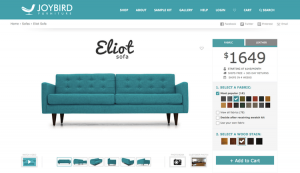
The beauty of dropshipping is that it lets you sell products online with very little investment or risk. For businesses looking to expand their offerings on their current storefront, open a new store or simply test new products outside of those currently handled by their logistics provider or warehouse, adding a dropshipper to their fulfillment ecosystem is a common strategy.
When testing this out, the retailer does not keep goods in stock, but instead transfers customer orders and shipment details to either the manufacturer or a wholesaler, who then ships the goods directly to the customer.
While dropshipping is a great way to help scale your business, finding the right dropshipper to add to your mix can be challenging. There are plenty of middlemen and brokers who claim to be genuine, but can end up negatively impacting your margins and customer confidence and perception of your brand. Therefore, retailers must do their own research to avoid being exploited. It is simply a matter of remaining customer-centric as well as dedicated to your overall brand experience.
Here’s short list of important considerations in selecting a dropshipper.
1. Start with the Manufacturer
Removing the middlemen from your supply chain will increase your dropshipping success. That said, figure out who manufactures the items you want to sell on your store and contact them directly. Manufacturers typically have the best prices if they do dropship, and if they don’t, they’ll likely have leads on reputable distributors who may carry similar products from different manufacturers. In other words, go to the source. Don’t get hassled by the middlemen.
2. Put Them to the Test
Ensure your dropshippers are reliable by placing a few test orders with them. Take note of the average shipping time and quality of the items received. Remember, your customers’ experience will reflect on your brand, not the dropshipper.
Keep in mind, as well, that by utilizing a dropshipper, you no longer have strict control over the look and feel of packaging. While the dropshipper should use the label you provide, they may not adhere to your brand’s other packing requirements, perhaps increasing the potential for damage of the item or going off-brand from the packaging look-and-feel of items shipped directly from store.
If you sell in a marketplace –– i.e. Amazon, eBay, Etsy –– make sure that the dropshipper delivers within the marketplace’s required timeframes. If your product is delivered by the dropshipper outside of the required delivery time, your brand will receive negative feedback with the potential of generating penalties against your seller accounts.
Plus, it is extremely difficult to win back customers who had a negative experience with your brand. Check out some of these stats as proof:
- 89% of consumers have stopped doing business with a company after experiencing poor customer service.
- Consumers are 2x more likely to share their bad customer service experiences than they are to talk about positive experiences.
- It takes 12 positive customer experiences to make up for one negative experience.
In other words, do your due diligence when selecting a dropshippers. Their potential poor performance could result in negative brand engagement for your company.
3. Ensure They Have a Competent Support Staff
Contact dropshippers who fit your criteria for products offered. If you are not able to quickly connect with a representative on email or via phone, it can be indicative of the type of customer service you will receive if you use them. Ask if your company will be assigned a representative or if you will be dealing with a different person every time you need assistance. Either type of system can work if the dropshipper’s service is acceptable. Determining that, however, is up to you.
4. Make Sure You Are Paying True Wholesale Prices
Are the product and shipping costs within a profitable range? Many product suppliers claim to price items low enough for buyers to produce efficient profit margins, when in reality their prices are retail or just below.
Speaking of extra unwanted costs, legitimate dropshippers rarely require account set up fees or monthly account maintenance fees. If the service you are using does require this, talk with a representative about why this is, being sure to feel out the situation and charges for yourself.
Finally, as you identify products that sell well for you, you should be able to purchase those products in larger volumes to leverage volume price breaks.
5. Plan for Returns and Other Issues
Backorders, lost shipments and returns are all part of retailing. Unfortunately, when using a dropshipper, some of these issues may be beyond your control. Your best plan of attack is to be prepared for these issues by discussing policies and expectations with the dropshipper ahead of time. Your customers expect their product to be a certain quality, based on your brand reputation, and therefore your dropshipper will need to guarantee a certain standard of product quality in addition to being willing to replace any defective products.
Be wary of dropshippers that do not offer these guarantees.
6. Pay Attention to the Metrics
Be sure to research and compare your potential dropshippers objectively against the metrics that matter most to your business. Common questions include:
- How many online stores have used this dropshipper for at least one order in the past 30 days? This is an indication of the dropshippers’ competency and size. It might even be useful to ask for specific online stores and reach out to them for reference.
- How accurate is their inventory feed? How often is it updated? What is their backorder rate?
- At any given time, what percentage of their inventory is in stock –– by SKU and across their total SKU volume?
- Do they support the partial shipping of orders? Do they allow backorders?
- What are their shipping methods and costs?
- What is their average shipment time after an order is processed?
7. Favor Dropshippers Who Embrace Technology
The more partners you add to your supply chain, the greater the complexity in your order management processes and decision making. If a dropshipper isn’t up to speed with the latest technologies and isn’t willing to cooperate with your technology stack, move on to one that is.
Manual handling of issues such as order routing and purchase order generation are susceptible to manual errors, lost orders and shipping mistakes, all of which can increase customer churn, leaving a bad taste in the mouths of online customers you were hoping to “wow.”
In all, automate as much as possible. Remove the manual labor from the equation so you can focus on growing your business. Dropshippers that make use of emailed or FTP order fulfillment while providing inventory in a highly compatible format –– i.e. CSV –– can make managing your store and integrating with other ecommerce technology providers much, much easier.
(222)
Report Post






